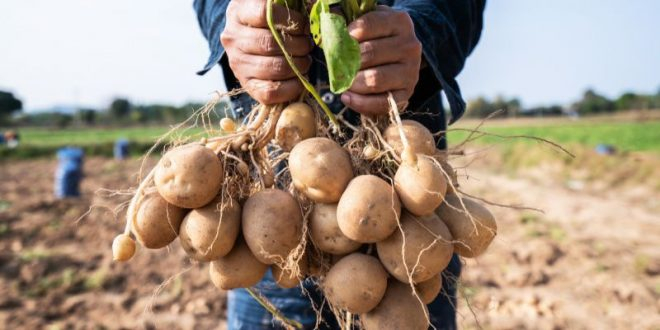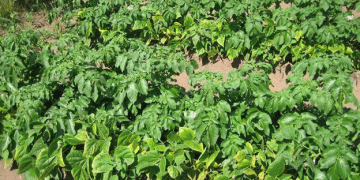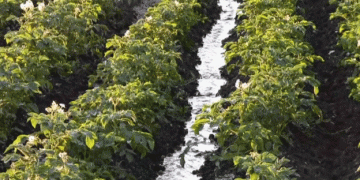#PotatoFarming #LateBlight #AgriculturalChallenges #CropQuality #SustainableAgriculture #NEPGData #AgriculturalInnovation #FarmingCommunity #PotatoCropManagement
In the face of challenging weather conditions, the potato farming industry in the NEPG zone is gearing up for a significant rebound, with preliminary estimates indicating a recovery to multi-year averages. However, an ominous shadow looms over this positive outlook – the threat of late blight, a notorious potato disease. Recent reports from the North-Western European Potato Growers (NEPG) have highlighted the potential impact of late blight on the 2023 harvest, urging farmers, agronomists, agricultural engineers, and scientists to take proactive measures. This article delves into the data provided by NEPG, exploring the challenges faced by potato growers, the implications on quality and production, and the urgent steps needed to safeguard this vital agricultural crop.
Challenges Faced by Potato Growers:
Late blight, caused by Phytophthora infestans, poses a severe threat to the potato harvest in the NEPG zone. Unfavorable weather conditions, including delayed planting and persistent high humidity, have created an ideal environment for the disease to thrive. The NEPG warns of significant attacks on tubers in specific subregions, potentially leading to lower tuber counts, physiological issues like empty heart and rot, and decreased processing yields due to underwater weight mitigation.
Data Insights:
According to the latest data from NEPG, the global average planting dates were delayed by three weeks in 2023. While this resulted in a boost in yields, it also contributed to the prolonged presence of late blight. Comparing the current production to that of 2021, there is an alarming increase in processing requirements, with the NEPG zone’s processors needing an additional 2 million tonnes of potatoes. This surge in demand, coupled with lower productions in regions like Poland and southern Europe, intensifies the competition between industry buyers and exporters.
Urgent Measures and Solutions:
Farmers and agricultural experts are strongly urged to meticulously inspect their fields for signs of tuber blight. The assessment of blight impact is pivotal for making informed decisions regarding haulm destruction and storage planning. Effective communication between producers and buyers is emphasized, underlining the industry’s collaborative approach to tackle this challenge. Additionally, there is a pressing need for research and innovation in disease-resistant potato varieties, sustainable farming practices, and advanced storage technologies to mitigate the impact of late blight and ensure future potato crop viability.
The challenges faced by potato growers in the NEPG zone necessitate a collective effort from farmers, agronomists, agricultural engineers, and scientists. By understanding the implications of late blight and embracing innovative solutions, the industry can navigate these challenges successfully. Collaborative research, proactive disease management, and sustainable agricultural practices are key to ensuring the resilience of the potato farming sector in the face of evolving climate patterns and disease threats.
Tags: Potato Farming, Late Blight, Agricultural Challenges, Crop Quality, Sustainable Agriculture, NEPG Data, Agricultural Innovation, Farming Community, Potato Crop Management






